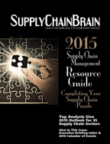
Home » Internal and External Misalignment
Internal and External Misalignment

February 19, 2015
It seems obvious: when business relationships are not aligned, they probably can’t succeed, at least not at a very high level. This is true when the relationships are “internal” such as procurement and operations, or “external” such as a buyer-supplier relationship.
Unfortunately, many truly believe they are “on the same page,” so they don’t give alignment much thought. Or an existing relationship that began with promise somehow finds itself off-kilter. Individuals and organizations discover they have a lack of trust and confidence. They have not done their alignment homework.
One way to gain alignment is by following five steps outlined in Getting to We: Negotiating Agreements for Highly Collaborative Relationships. The tips apply to strategic relationships and can also apply to internal alignment as well:
- Prepare for a “what’s-in-for-we” (WIIFWe) mindset: By completing this step, the parties know whether they have a solid foundation for a successful collaborative relationship based on trust, transparency and compatibility.
- Jointly agree on a shared vision for the partnership: Each party has its own vision, but they transform those separate visions into a shared vision, giving the partnership its purpose beyond a series of transactions.
- Collaboratively negotiate guiding principles for the partnership: The WIIFWe mindset demands that partners abide by a set of principles to drive highly collaborative behavior. The six guiding principles are: reciprocity, autonomy, honesty, equity, loyalty and integrity. They provide a supporting framework for implementing the WIIFWe mindset.
- Negotiate as We: The parties establish the mechanisms they will use as they negotiate agreement specifics. This includes “negotiation rules,” strategies and tactics, and the approach for ensuring the deal is fair and balanced, especially in regarding risk allocation and value creation.
- Living as We: The partners maintain a focus on the shared vision and guiding principles throughout the duration of the relationship.
It’s highly valuable, and necessary, to assess and measure the strength of the relationship across five dimensions—trust, innovation, communication, team orientation and focus. The Vested Way web site has tools to deal identify and deal with areas of misalignment.
The Compatibility and Trust Assessment (CaT), developed by professors Gerald Ledlow and Karl Manrodt, measures the strength of business relationships across those five dimensions.
Accurately assessing trust is often a one-sided affair. A buying company will evaluate a supplier’s trustworthiness without understanding the supplier’s perceptions of the buying company’s trustworthiness. Alignment is thus difficult if not impossible.
The CaT provides a 360-degree view of the relationship. The CaT scores the buyer on its perception of itself and its perception of the supplier. Likewise, it scores the supplier on its perception of itself and its perception of the buyer. This provides a global view of the relationship dynamics and organizational alignments.
The Outlook
Alignment is a necessary step for strategic relationships to prosper. It builds value and results in decreased transaction costs, broader solutions and agreements, and more options for innovation. Are you aligned with your most important suppliers, and are they aligned with you? The CaT might jump up and surprise you.
RELATED CONTENT
RELATED VIDEOS
KEYWORDS Business Strategy Alignment Collaborative Relationships faculty Food and Beverage Global Supply Chain Management Kate Vitasek partner compatibility supplier network Supply Chain Analysis & Consulting Supply Chain Management Supply Chain Management: Business Strategy Alignment supply chain partnership Technology University of Tennessee’s Center for Graduate Executive Education programs
Subscribe to our Daily Newsletter!
Timely, incisive articles delivered directly to your inbox.
Popular Stories

2024 Supply Chain Management Resource Guide: There's Only One Way Off a Burning Platform
VIEW THE LATEST ISSUECase Studies
-
Recycled Tagging Fasteners: Small Changes Make a Big Impact
-

Enhancing High-Value Electronics Shipment Security with Tive's Real-Time Tracking
-

Moving Robots Site-to-Site
-
JLL Finds Perfect Warehouse Location, Leading to $15M Grant for Startup
-
Robots Speed Fulfillment to Help Apparel Company Scale for Growth



